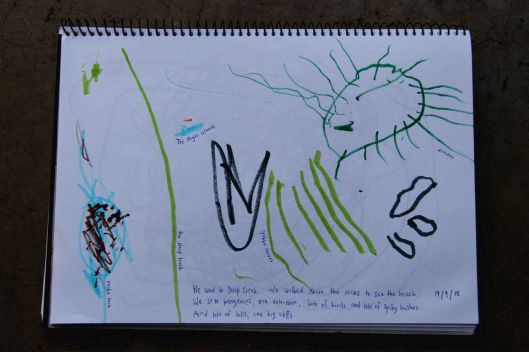Tags
annual report, books, ecology, erosion, farm, Fleurieu, Fleurieu Coast, kangaroos, livestock, permaculture, photography, planning, revegetation, seasons, soil, southwestern Fleurieu, summer, trees, winter, yarnauwi

A melted tree guard shrink wraps a seedling after a fire move through part of the property in January 2019.
2019 began and ended in fire. In early January, some errant fireworks set off by passers-by landed in one of our front paddocks, burning across a couple of hectares of our property. We were lucky. There was little wind, and it was quickly noticed and contained by our amazing neighbours and the CFS. Meanwhile, in Tasmania, fires ripped through the forests, and by spring and early summer, vast tracts of the east coast and Kangaroo Island were catastrophically aflame once again. While we’ve escaped the drought and bushfires that have gripped so much of the continent, these phenomena have served to focus our goals and aspirations in 2019. It’s been a year of learning as we work towards a more regenerative approach: ultimately building soil and harvesting water and carbon in the landscape.

2019 had the dubious distinction of being Australia’s hottest and driest year on record. It got pretty warm in the shed.
Learning
Our regenerative aspirations have been focused by some outstanding events this year. In June, we attended the Deep Winter Agrarian Gathering in Willunga, drawing together 150 aspiring and established regenerative farmers from around Australia to share skills and ideas. Former CSIRO microbiologist and climate scientist Walter Jehne set the tone with a rousing and inspirational keynote on restoring natural processes through agriculture to cool the climate.

The Food Forest’s Annemarie Brookman with Gardening Australia’s Costa Georgiadis at Deep Winter, Willunga.










 One of our motivations for seeking land beyond the city was the hope that it would support our children to develop a deep connection with a particular patch of ground. Of course, in imagination, it’s all pretty easy: self-directed kids building cubbies in the golden light of late afternoon, climbing trees and constructing dams. In truth, it sometimes feels like masochism.
One of our motivations for seeking land beyond the city was the hope that it would support our children to develop a deep connection with a particular patch of ground. Of course, in imagination, it’s all pretty easy: self-directed kids building cubbies in the golden light of late afternoon, climbing trees and constructing dams. In truth, it sometimes feels like masochism.








